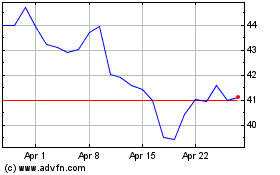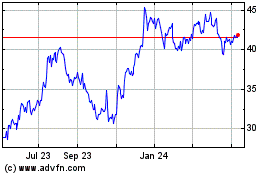(FROM THE WALL STREET JOURNAL 12/17/15)
By Rachel Louise Ensign
Big U.S. lenders said they would raise rates on some loans after
the Federal Reserve lifted its benchmark interest rate by a quarter
percentage point.
Depositors hoping for a bump in their savings rates will need to
wait, though.
J.P. Morgan Chase & Co., Wells Fargo & Co., Bank of
America Corp., Citigroup Inc. and other large banks said they would
increase the prime rate, a key reference rate for a variety of
loans including credit-card debt.
The moves reflected the Fed's decision to increase the
federal-funds target rate from near zero, where it has been for the
past seven years.
The Fed's decision marks the end of an era that had pinched
banks' lending profits and forced them to change the way they do
business. Lenders have anticipated that higher rates will provide
an immediate boost to lending income, while also possibly helping
loan demand.
But savers won't see benefits as quickly. As expected, banks
didn't announce any corresponding increases in deposit rates to go
with the rise in the prime rate.
The prime lending rate, which usually hovers above the fed-funds
rate, will go to 3.5% from 3.25%. Other banks that announced a move
included U.S. Bancorp, PNC Financial Services Group Inc., HSBC
Holdings PLC and M&T Bank Corp. Most of the banks said the move
would occur Thursday. Bank of America said it would increase its
rate immediately.
In a rising rate environment, deposit-rate increases typically
lag behind increases in loan rates by months, which is why banks
can make more money when rates go up. By contrast, the yields on
money-market mutual funds rise more quickly, and some funds are
expected to raise the rate on those savings products within
days.
Banks have had a hard time predicting the rate at which customer
defections force them to pay out a higher rate on deposits.
In periods of rate increases by the Fed over the past two
decades, the average interest paid on deposits rose by about 0.25
percentage point over the first year, according to data by
Bankrate.com.Over the same period, the prime rate rose much
more.
This is now "a bigger question mark than ever," given new
regulations that make certain deposits more valuable than others,
said Erika Najarian, head of U.S. banks equity research at Bank of
America's BofA Merrill Lynch Global Research.
In 2006, banks passed along 17% of the increase in rates to
depositors over the next year, said Ms. Najarian. This time around,
the figure could rise to 30% or so, she said,
While the move in interest rates won't help bank profits
significantly unless it is followed by further rate increases, the
decision is expected to give a jolt to some of the most
interest-rate-sensitive banks. At Bank of America, Evercore ISI
projects the incremental Fed move would lead to $621 million more
in net interest income over a year.
Fed Chairwoman Janet Yellen said Wednesday that she expected the
central bank would raise short-term interest rates gradually in
coming months.
Bank executives applauded the Fed move. "It just felt good,"
said U.S. Bancorp Chief Executive Officer Richard Davis.
When the Fed lowered interest rates near zero in the wake of the
financial crisis, it ushered in a difficult period for bank
profits, even as the broader economy slowly recovered.
Banks' lending profitability steadily declined through the
recovery.
At larger U.S. banks, the net interest margin -- the difference
between what banks charge borrowers and pay out to depositors --
has fallen from 3.89% in early 2010 to 2.92% in the third quarter
of 2015, according to the Federal Deposit Insurance Corp.
Lenders tried to cope by cutting expenses and bolstering
fee-based businesses that don't depend on interest rates.
Many banks had expected the rate increases to start earlier this
year and took additional measures to maintain their bottom lines
when that didn't happen. Some invested depositors' cash into
higher-yielding, longer-term securities to counter the earnings
pressure, a tactic that could backfire if those holdings lose value
as rates rise.
Other bankers are more sanguine. BB&T Corp. CEO Kelly King
said last week that he expected a small Fed rate increase to be
"very stimulative" and help loan demand.
"It will enhance the income for savers, and savers will spend
some of that money," Mr. King said at a conference last week.
---
Peter Rudegeair contributed to this article.
(END) Dow Jones Newswires
December 17, 2015 02:47 ET (07:47 GMT)
Copyright (c) 2015 Dow Jones & Company, Inc.
US Bancorp (NYSE:USB)
Historical Stock Chart
From Jun 2024 to Jul 2024

US Bancorp (NYSE:USB)
Historical Stock Chart
From Jul 2023 to Jul 2024
